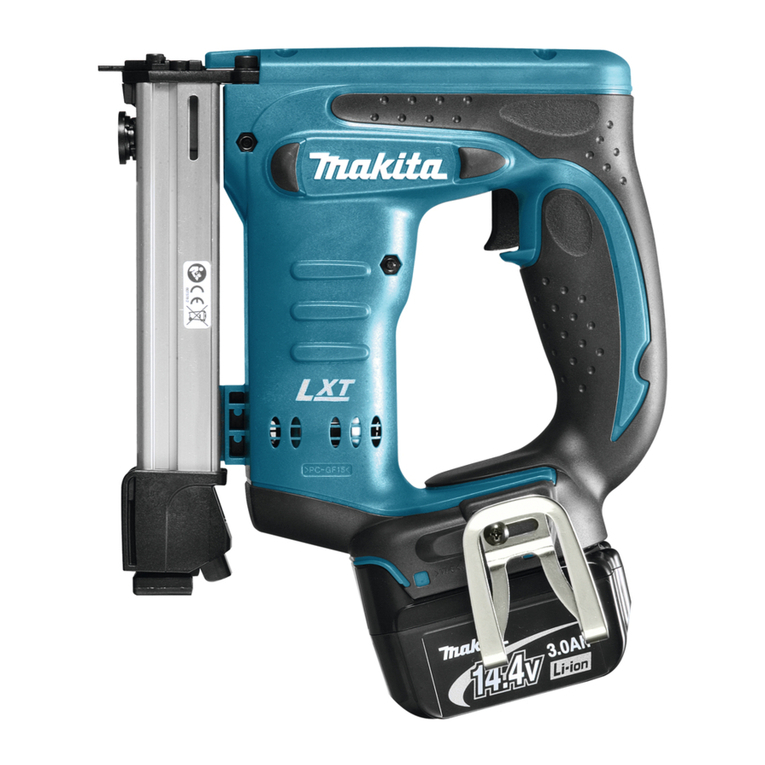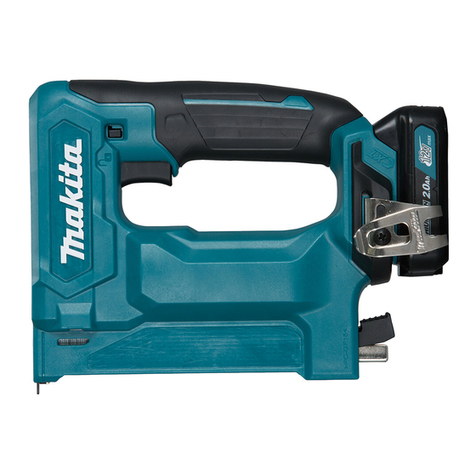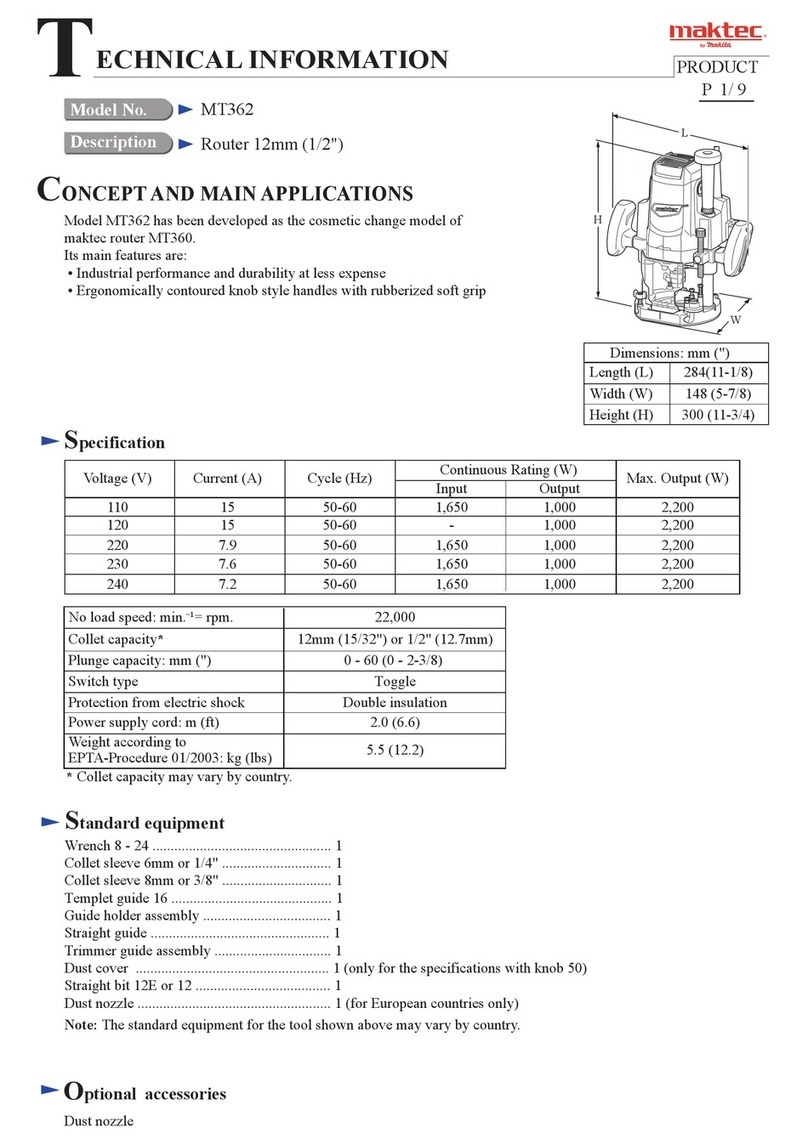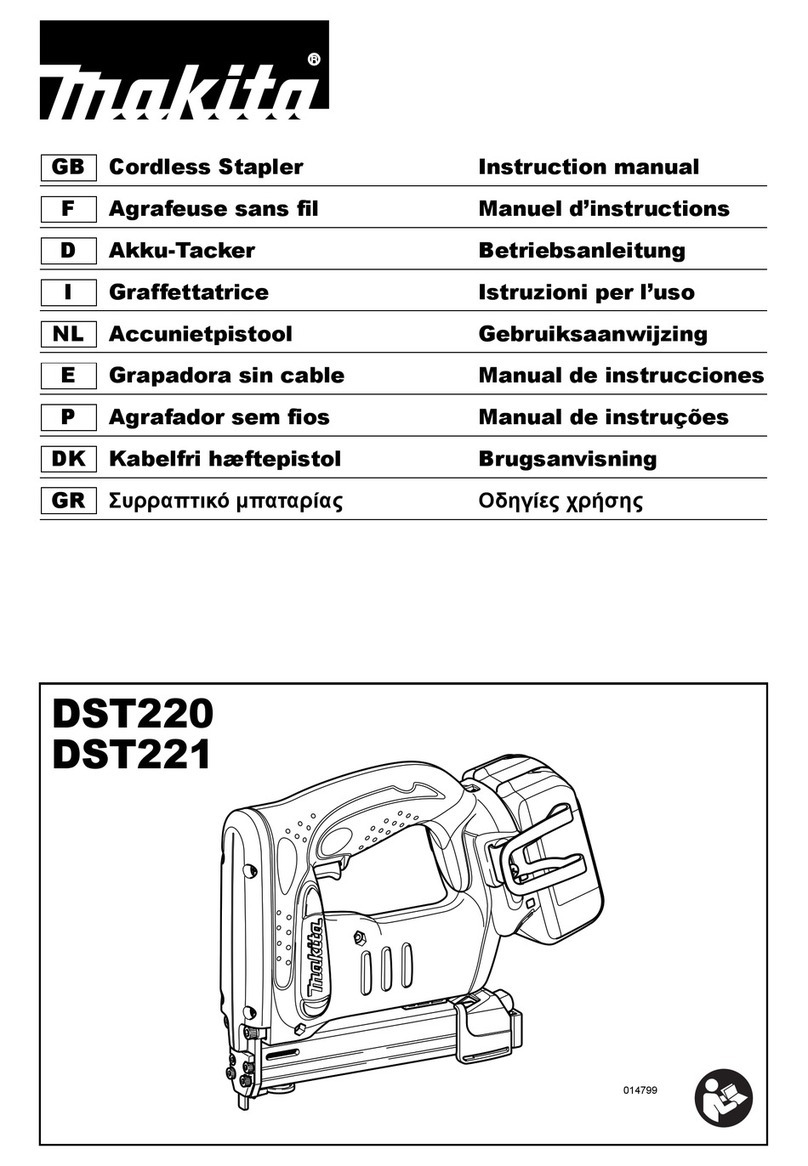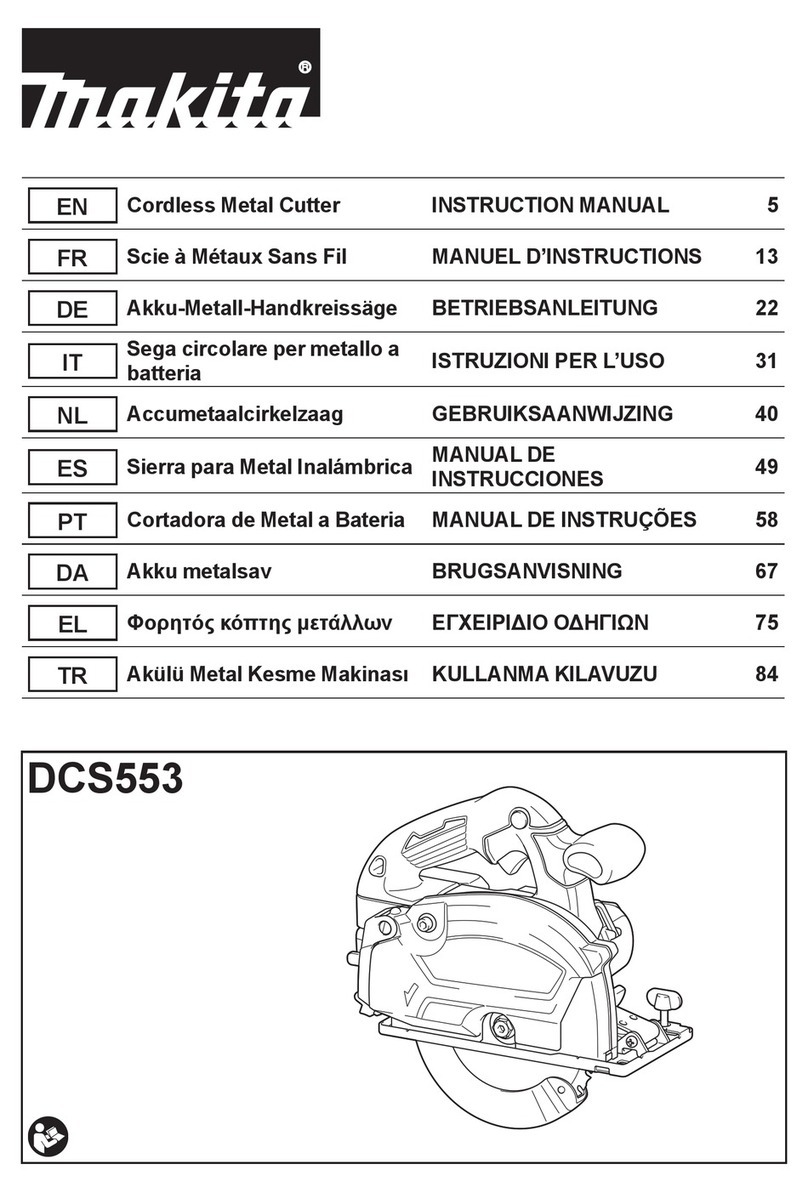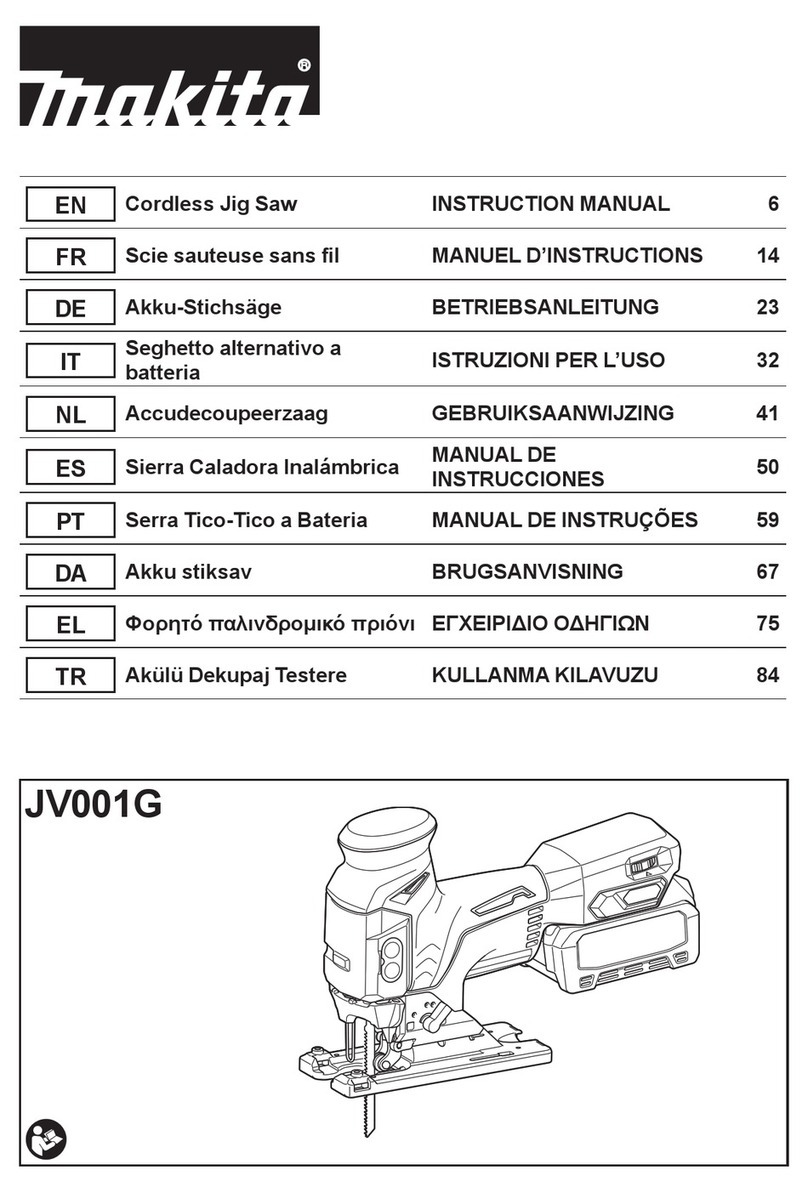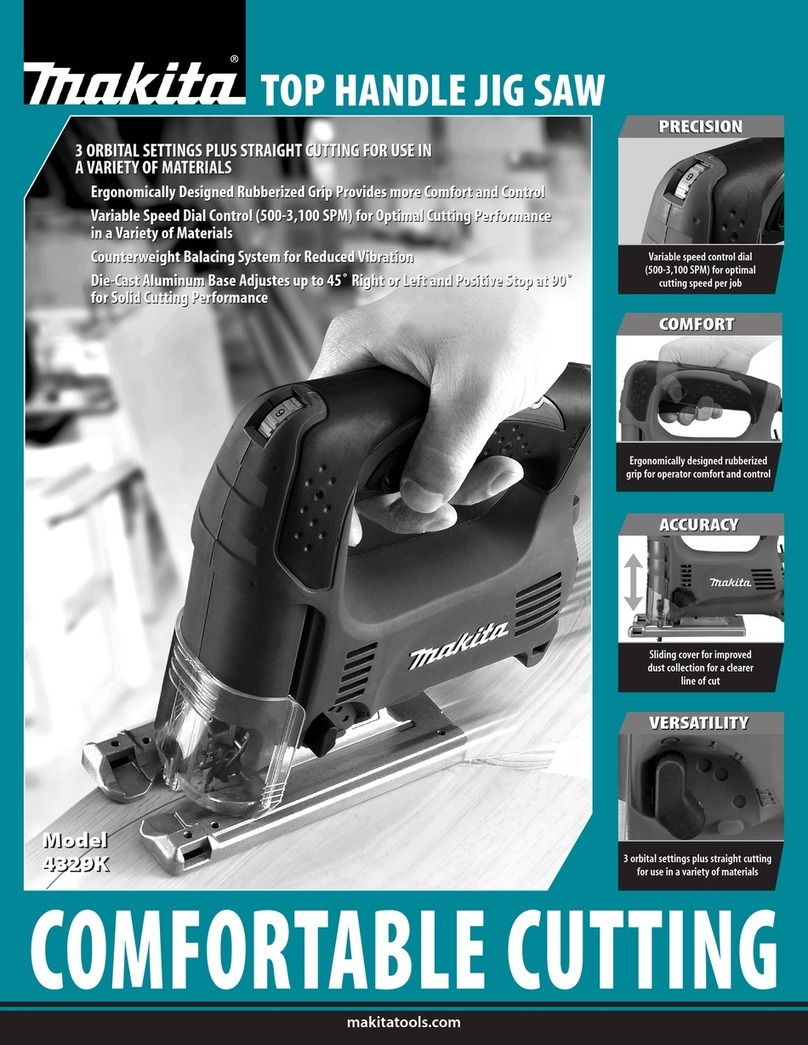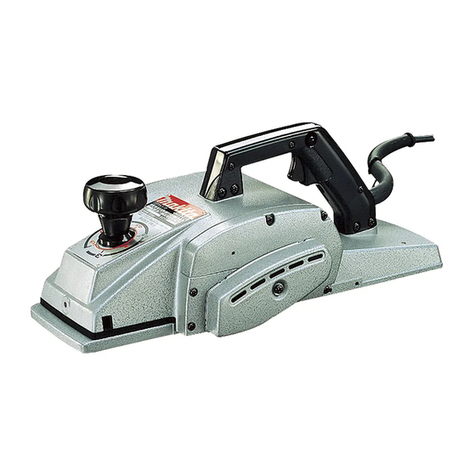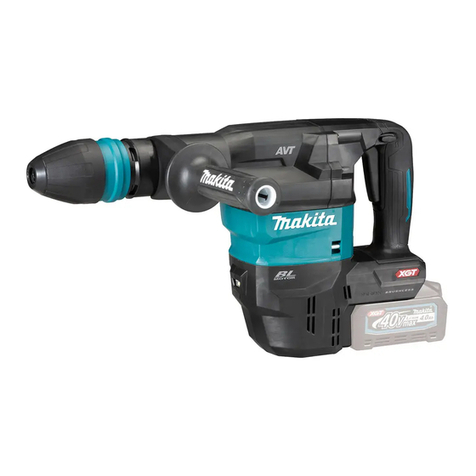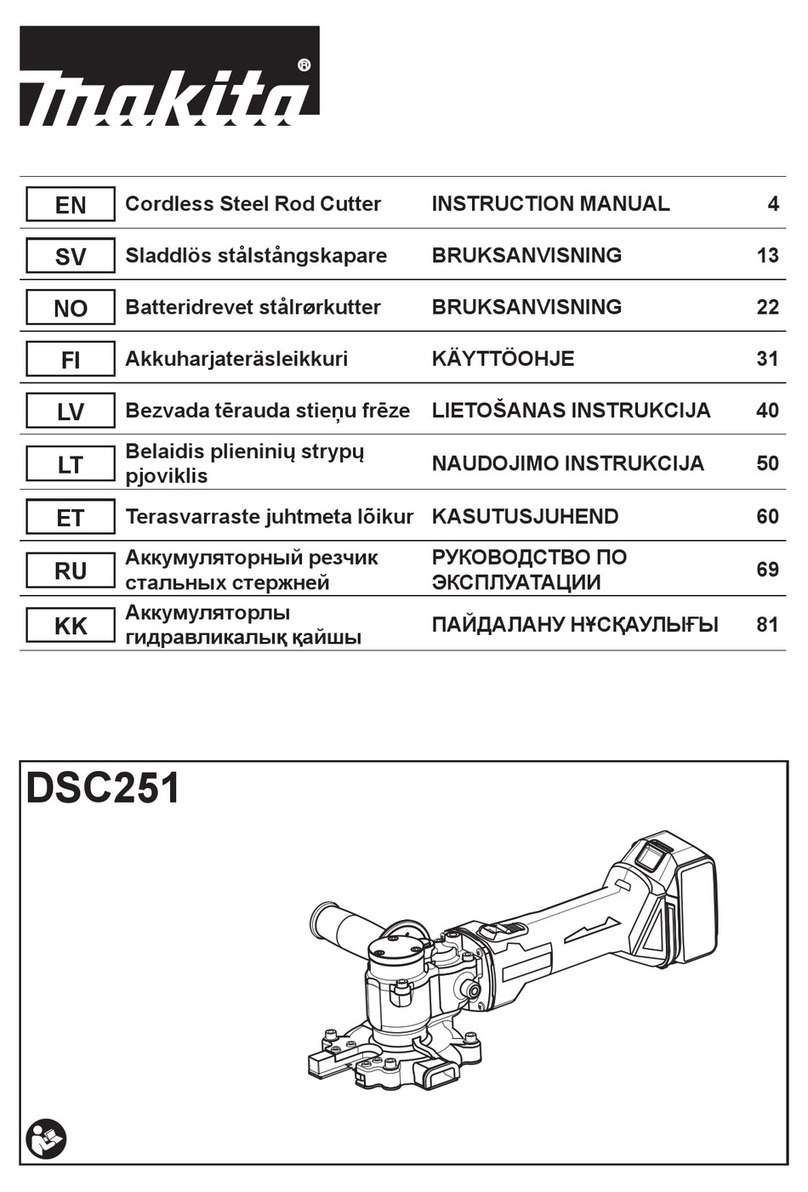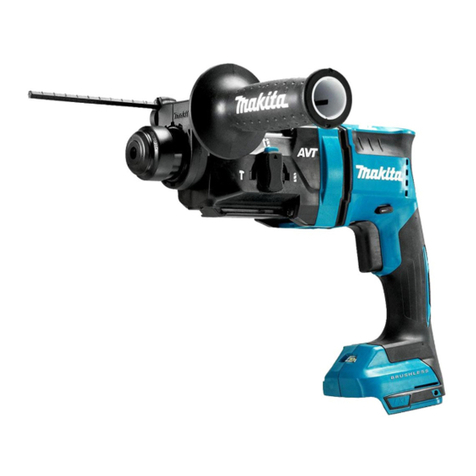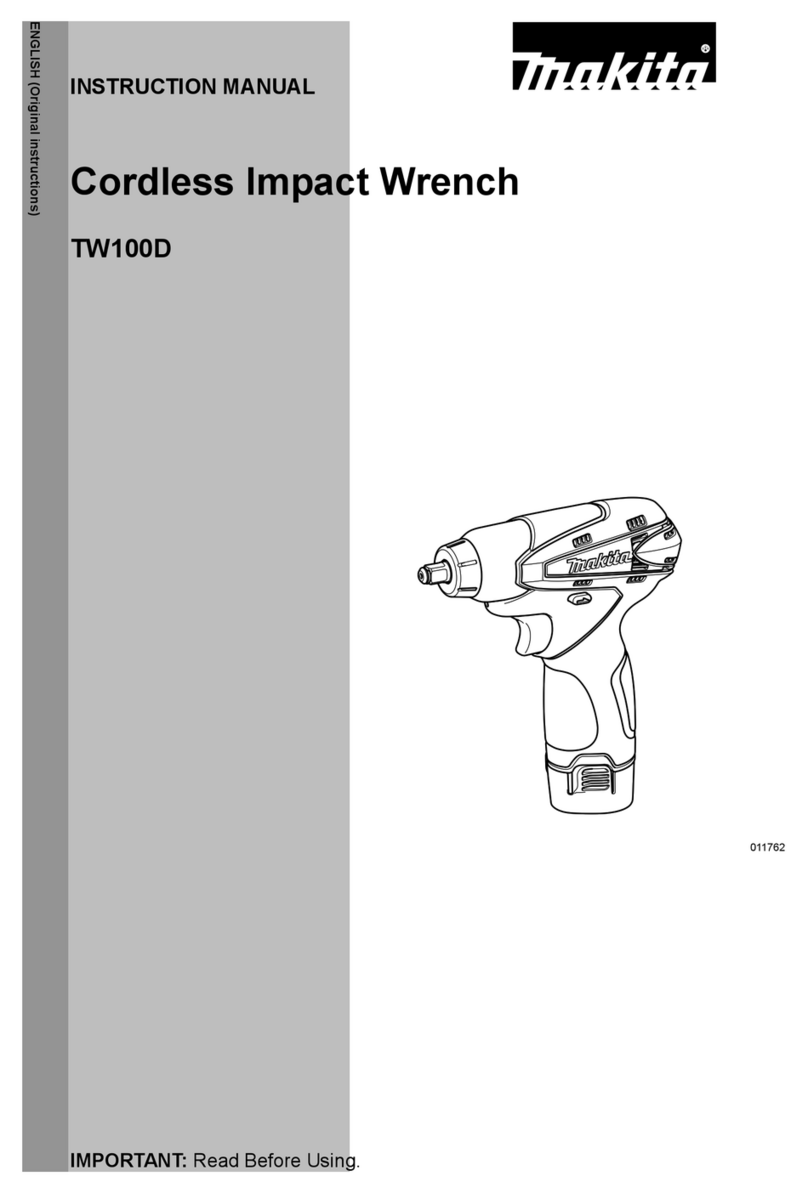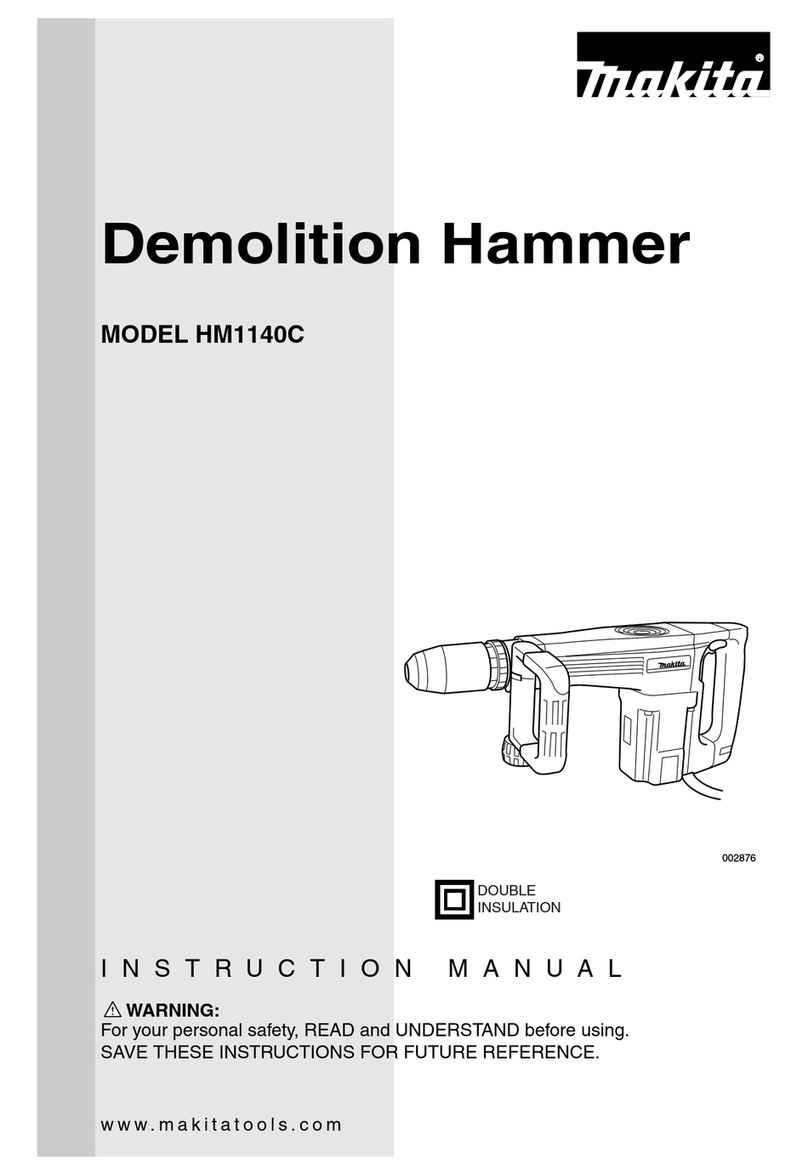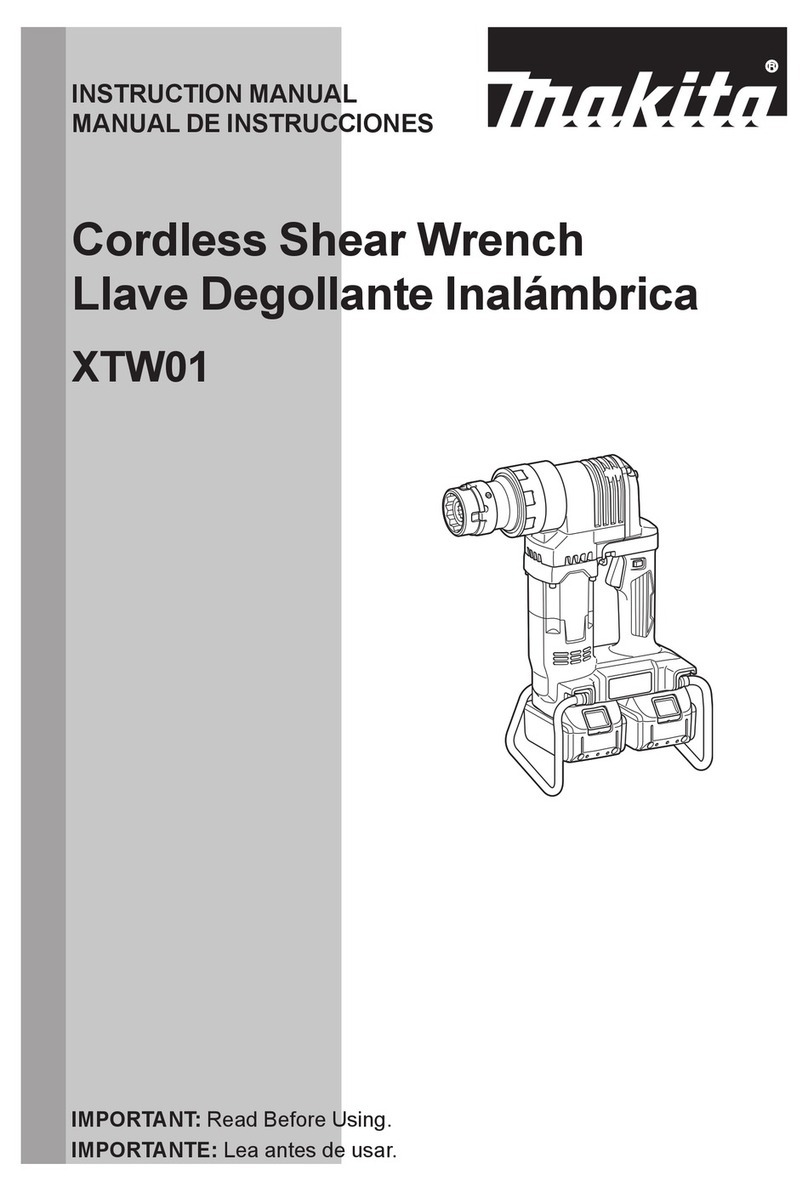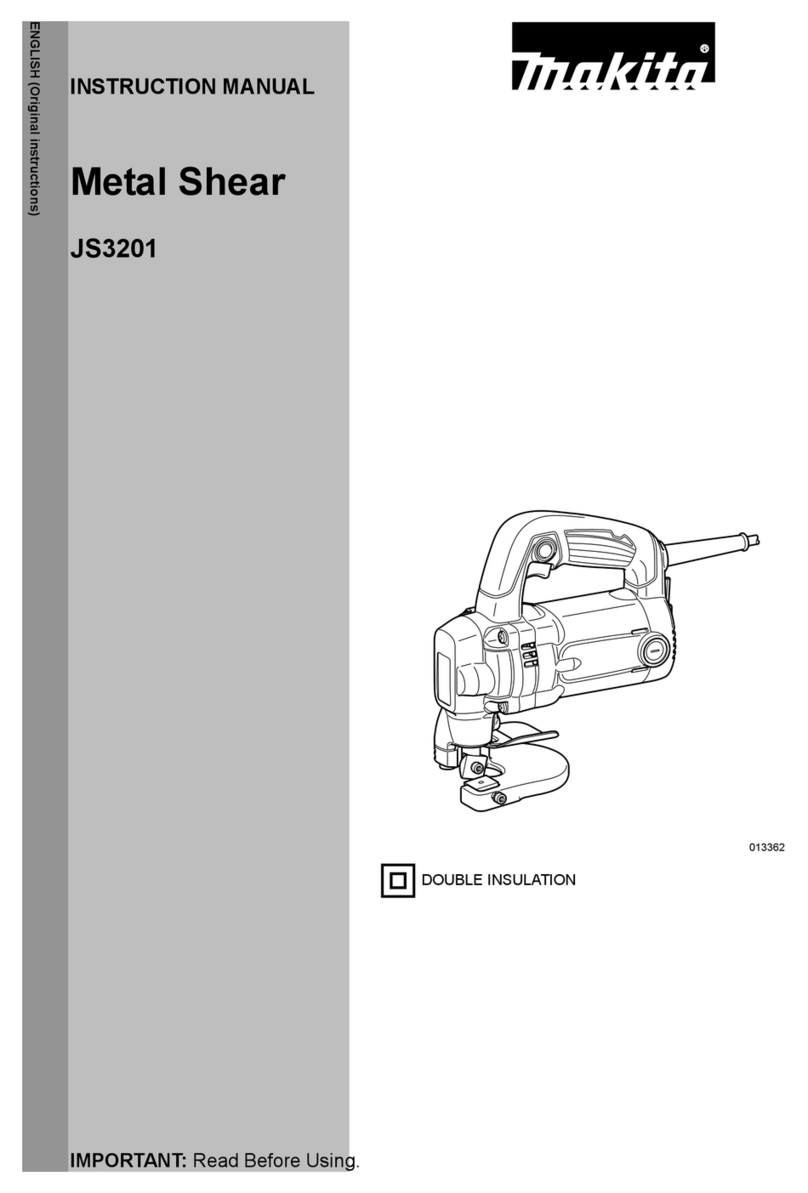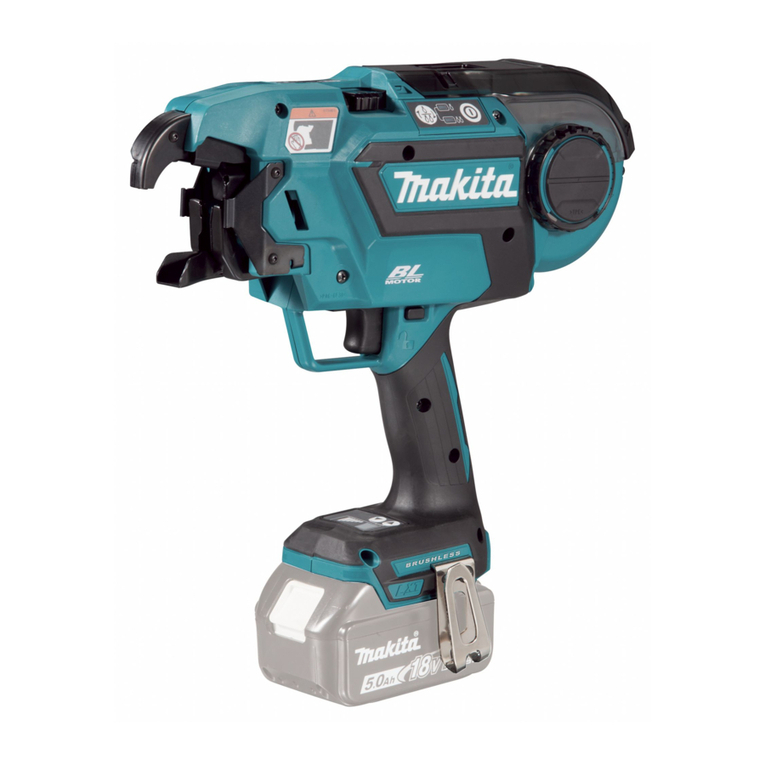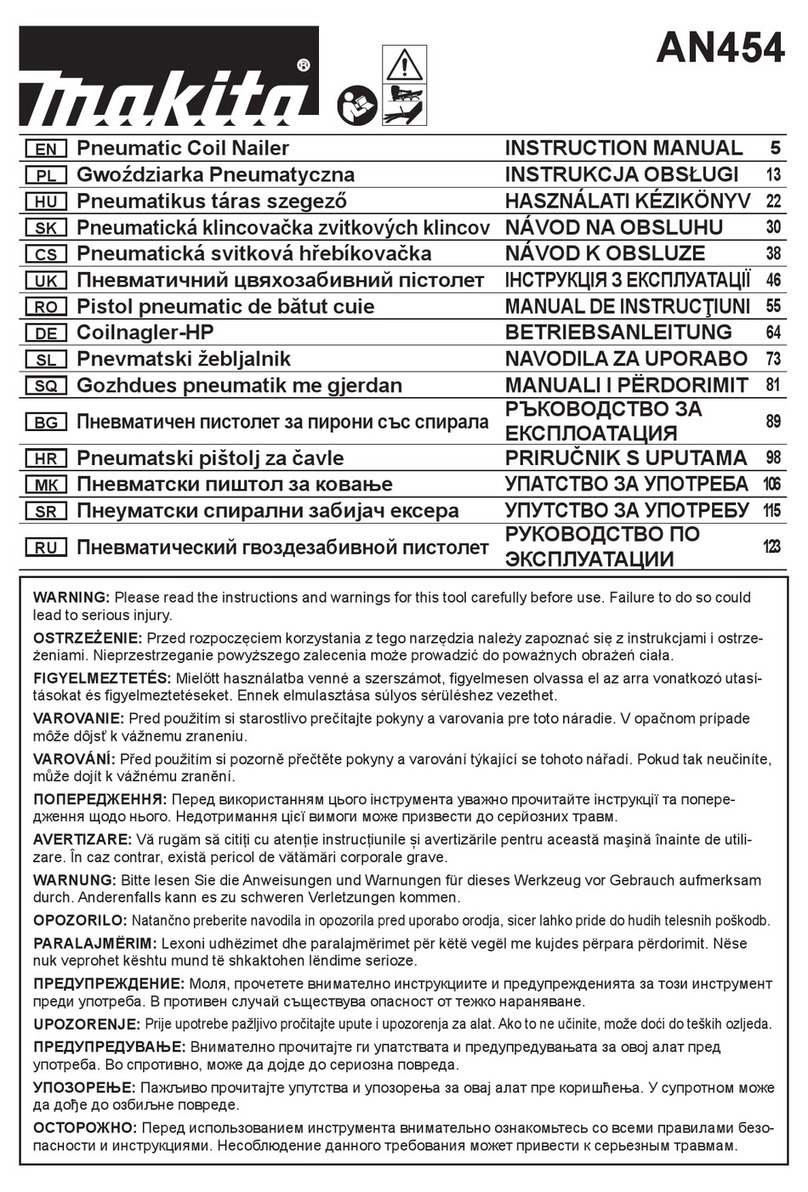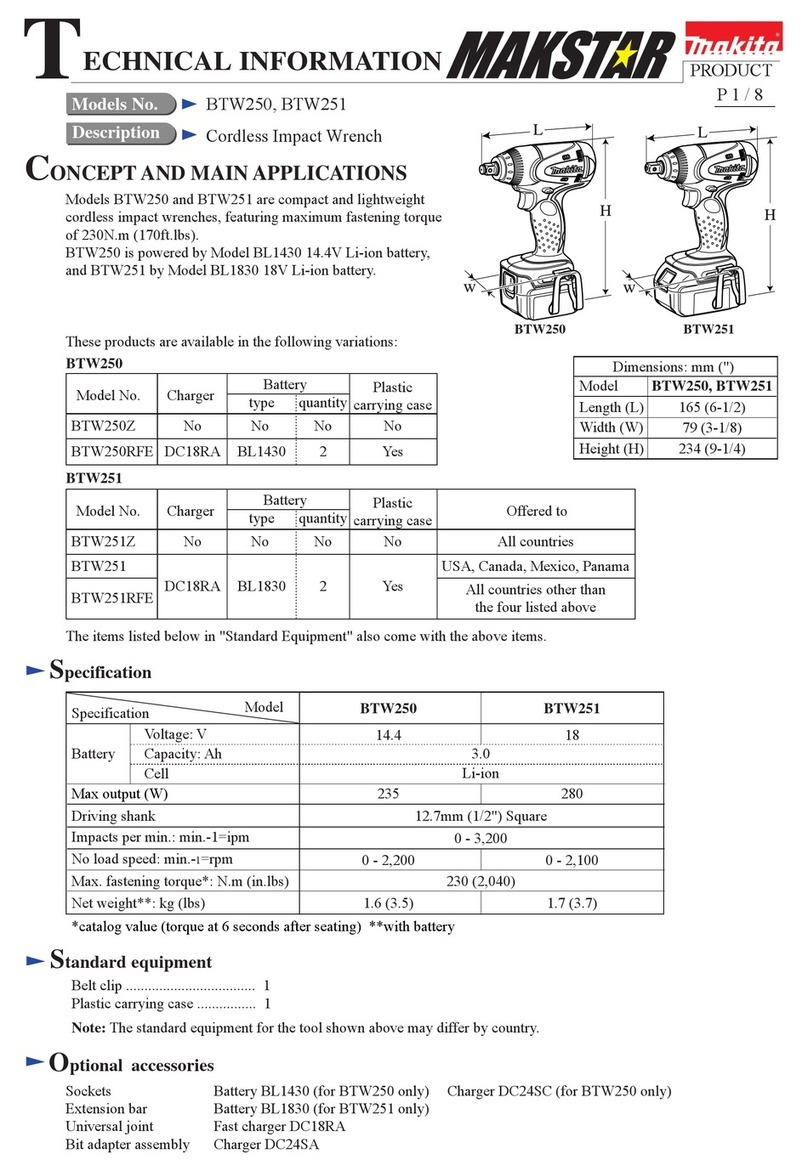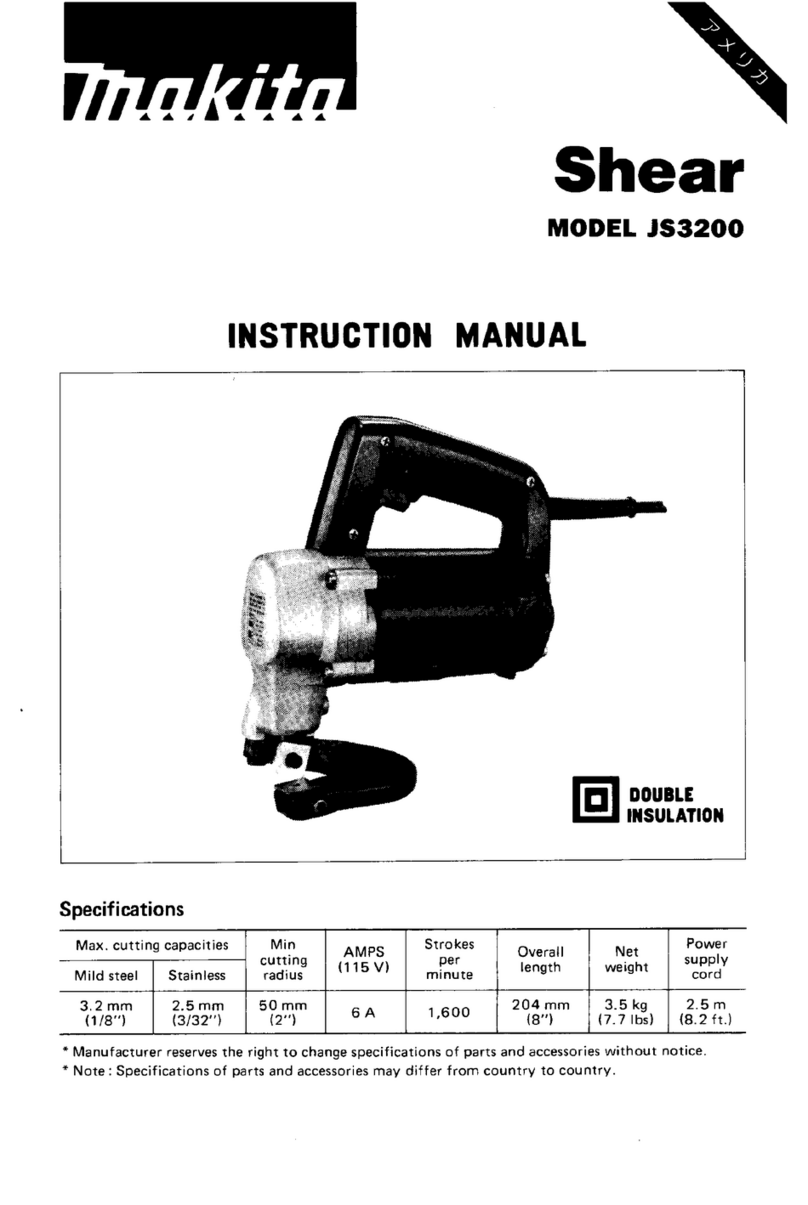
4 English
nDress properly. Do not wear loose clothing or
jewellery. Keep your hair, clothing and gloves
away from moving parts. Loose clothes, jewel-
lery or long hair can be caught in moving parts.
nIf devices are provided for the connection of
dust extraction and collection facilities, ensure
these are connected and properly used. Use of
these devices can reduce dust related hazards.
Power tool use and care
nDo not force the power tool. Use the correct
power tool for your application. The correct
power tool will do the job better and safer at the
rate of which it was designed.
nDo not use the power tool if the switch does
not turn it on and off. Any power tool that cannot
be controlled with the switch is dangerous and
must be repaired.
nDisconnect the plug from the power source
before making any adjustments, changing
accessories, or storing power tools. Such pre-
ventive safety measures reduce the risk of starting
the power tool accidentally.
nStore idle power tool out of the reach of chil-
dren and do not allow persons unfamiliar with
the power tool of these instructions to operate
the power tool. Power tools are dangerous in the
hands of untrained users.
nMaintain power tools. Check for misalignment
or sticking of moving parts, breakage of parts
and other condition that may affect the power
tool’s operation. If damaged, have the power tool
repaired before use. Many accidents are caused
by poorly maintained power tools.
nKeep cutting tools sharp and clean. Properly
maintained cutting tools with cutting edges are
less likely to stick and are easier to control.
nUse the power tool, accessories and tool bits
etc., in accordance with these instructions and
in the manner intended for the particular type
of power tool, taking into account the working
conditions and the work to be performed. Use
of the power tool for operations different from
intended could lead to a hazardous situation.
Service
nHave your power tool serviced by qualified
repair person using only identical replacement
parts. This will ensure that the safety of the power
tool is maintained.
ADDITIONAL SAFETY
INSTRUCTIONS FOR HEAT GUN
nThis appliance is not intended for use by per-
sons (including children) with reduced phys-
ical,sensory or mental capabilities, or lack of
experience and knowledge.
Children should be supervised to ensure that
they do not play with the appliance.
nA fire may result if the appliance is not used
with care, therefore
– be careful when using the appliance
in places where there are combustible
materials;
– do not apply to the same place for a long
time;
– do not use in presence of an explosive
atmosphere;
– be aware that heat may be conducted
to combustible materials that are out of
sight;
– place the appliance on its stand after use
and allow it to cool down before storage;
– do not leave the appliance unattended
when it is switched on.
nDo not place your hand over the air vents or
block the vents in any way.
nThe nozzle and accessories of this tool
become extremely hot during use. Let these
parts cool down before touching.
nAlways switch the tool off before putting it
down.
nDo not leave the tool unattended while it is
switched on.
nA fire may arise if the appliance is not used
with care.
nHeat may be conducted to combustible materi-
als that are out of sight. Do not use in a damp
atmosphere, where flammable gases may be
present or near combustible materials.
nAllow the tool to cool fully before storing.
nEnsure adequate ventilation as toxic fumes
may be produced.
nDo not use as a hairdryer.
nDo not obstruct either the air intake or noz-
zle outlet, as this may cause excessive heat
build-up resulting in damage to the tool.
nDo not direct the hot air blast at other people.
nDo not touch the metal nozzle as it becomes
very hot during use and remains hot for up to
30 minutes after use.
nDo not place the nozzle against anything while
using or immediately after use.
nDo not poke anything down the nozzle as
it could give you an electric shock. Do not
look down the nozzle while the unit is work-
ing because of the high temperature being
produced.
nDo not allow paint to adhere to the nozzle or
scraper as it could ignite after some time.
Removing paint
nDo not use this tool to remove paint containing
lead. The peelings, residue and vapors of paint
may contain lead, which is poisonous. Any
pre-1960 building may have been painted in
the past with paint containing lead and cov-
ered with additional layers of paint.
Once deposited on surfaces, hand to mouth
contact can result in the ingestion of lead.
Exposure even to low levels of lead can cause
irreversible damage to the brain and nervous
system. Young and unborn children are partic-
ularly vulnerable.
nWhen removing paint, ensure that the work
area is enclosed. Preferably wear a dust mask.
nDo not burn the paint. Use the scraper and
keep the nozzle at least 25 mm away from the
